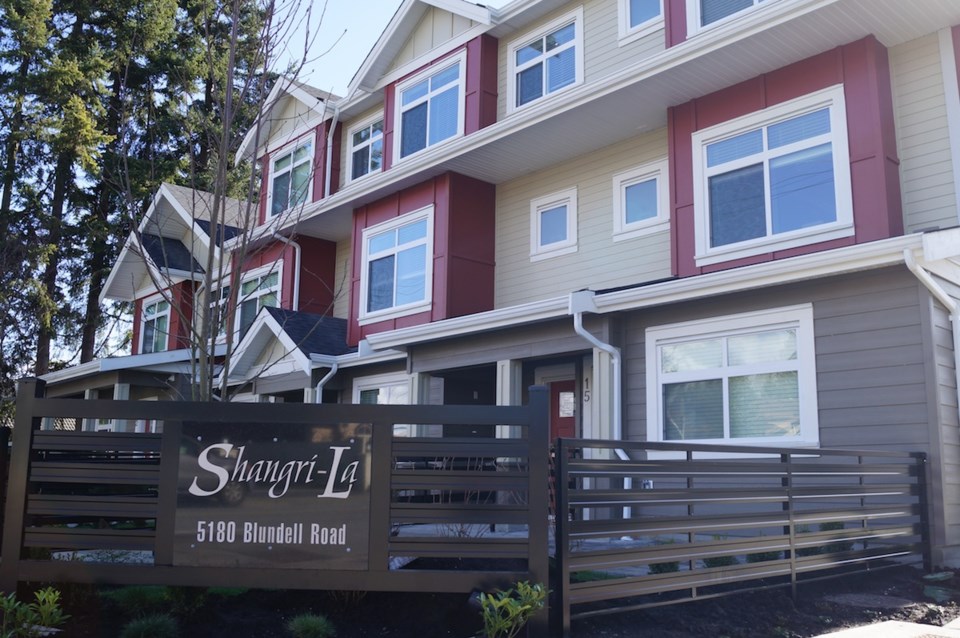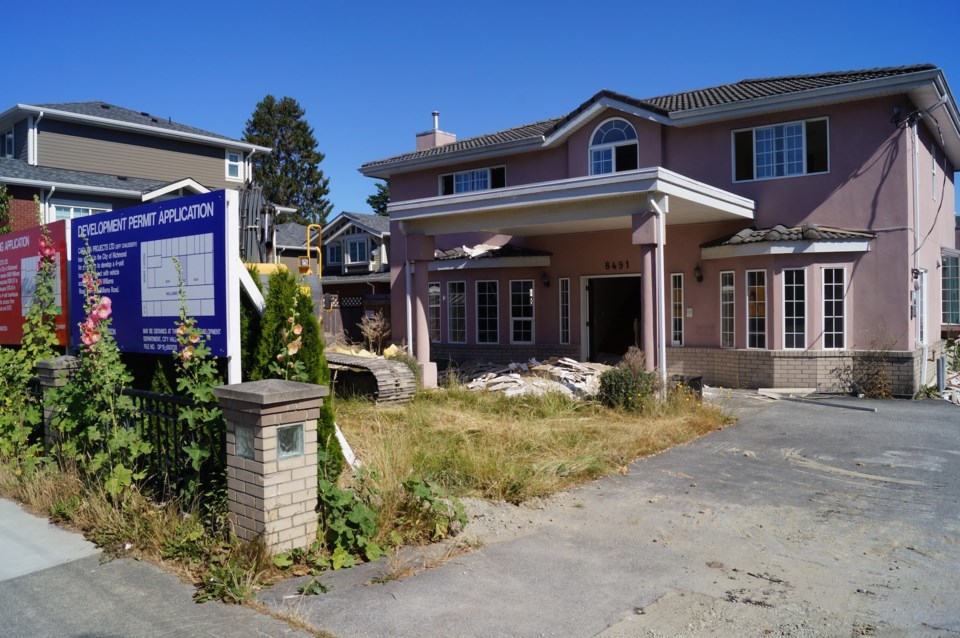With just one dissenting councillor, Richmond city council put the final stamp on plans to densify arterial roads with more townhouses, row houses, coach houses and triplexes.
The amended Arterial Road Policy aims to increase the city’s population outside the City Centre area and provide developers with incentives to build less expensive homes — at least on main roads. But, at a Dec.19 public hearing, Coun. Carol Day voted against the new policy, stating many of the changes will negatively impact the backyards of detached homes that face the arterial road lots.
In particular, a new development can now be as close as 4.5 metres from its backyard fence. Day said she wanted at least six metres of separation, like other municipalities.
Day also raised other concerns about traffic, parking and accessibility for seniors.
The vote went 6-1 in favour of a plan that should allow about 1,600 properties to convert into an estimated 5,800 new multi-family units, thus allowing 12,200 more residents into Richmond’s suburban area.
Couns. Derek Dang and Ken Johnston did not vote, as they declared a conflict of interest in the process, due to their personal business interests in such developments, as developers/investors.

Day said the new policy will benefit developers, who will be able to build and sell multiple units from the purchase of one property.
Coun. Bill McNulty lauded the changes, noting they will ensure fewer mega homes are built. Coun. Harold Steves also openly supports densification to curb housing unaffordability in the city.
The Richmond School District said it supports the new policy, as it theoretically increases the number of housing options for families near schools facing declining enrollment. But the district warned that pedestrian safety must be a primary consideration.
Through design, city planners intend to ensure the new developments are beneficial to the community, that tree planting will be adequate and pedestrian and cycling safety will be considered.
The Urban Development Institute and the Richmond Home Builders Group lent their support for the plan, in general. The building industry did voice other concerns, such as its desire to lower affordable housing cash contributions ($4 per square foot must be paid to the city when a new multi-family unit is built). As well, developers asked for the arterial roads to be pre-zoned. Planners refused this idea as the re-zoning process allows the public opportunities to comment on a specific development.
One arterial road that is set to see significant densification is Railway Avenue. Some residents expressed the need to widen the road to four lanes.



